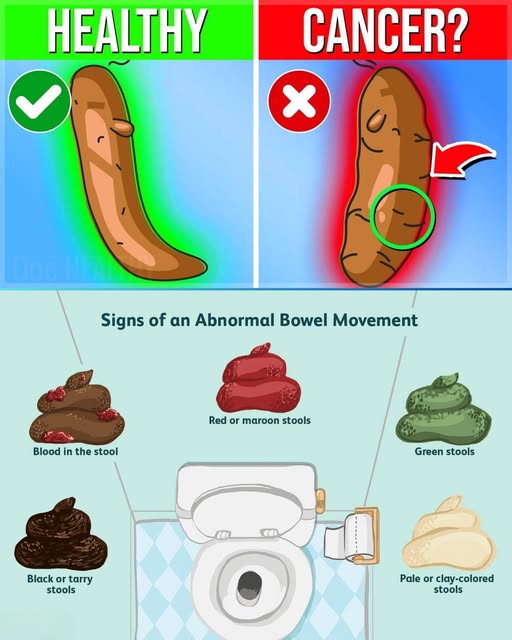What Your Stool Color Can Reveal About Your Health
The color and consistency of stool can offer valuable clues about your digestive health. While variations are common and often harmless, persistent or unusual changes may point to underlying issues that deserve attention.
Healthcare professionals frequently ask about bowel habits because stool appearance reflects how effectively the digestive system is processing food, bile, and nutrients. What may seem like a small detail can sometimes uncover imbalances that would otherwise go unnoticed.
The Normal Range
Healthy stool is typically medium to dark brown, a color produced by the breakdown of bile—a fluid made by the liver and stored in the gallbladder. Minor differences in shade or consistency are normal and often related to diet, hydration, and fiber intake.
What Different Colors May Mean
Green:
Often linked to eating leafy vegetables or foods with green coloring, green stool can also appear when food moves too quickly through the intestines, preventing bile from breaking down completely. If it continues for several days, it may suggest mild infection, stress-related digestion, or an imbalance in gut bacteria.
Yellow:
Yellow or greasy, foul-smelling stool can signal fat malabsorption or reduced bile output. It may point to conditions affecting the gallbladder, liver, or pancreas. Persistent symptoms warrant medical evaluation.
Black:
Sometimes caused by iron supplements or dark-colored foods, black stool that appears tar-like and unrelated to diet may indicate bleeding in the upper digestive tract (such as the stomach or esophagus). Immediate medical attention is advised.
Red:
Bright red stool can result from foods like beets or tomato-based dishes, but when those are ruled out, it may signify bleeding in the lower intestines or rectum. Consulting a doctor is important to determine the cause.
Pale or Clay-Colored:
This may indicate low bile production or a blockage in the bile ducts, potentially linked to liver or gallbladder dysfunction. Such changes should be assessed promptly.
Other observations—such as white specks (possible undigested material or parasites) or excess mucus (potential inflammation or infection)—can also provide diagnostic clues.
Supporting Digestive Health
To keep digestion running smoothly:
-
Stay hydrated to support regular bowel movements.
-
Eat a balanced diet rich in fiber from fruits, vegetables, and whole grains.
-
Limit processed foods that can disrupt the gut microbiome.
-
Pay attention to ongoing changes in stool color, frequency, or consistency.
When to Seek Help
Occasional variation is normal, but if you notice persistent changes—especially black, red, pale, or greasy stools—consult a healthcare provider. Tracking these details may feel minor, but it’s one of the simplest ways to monitor your body’s internal health.
Your digestive system speaks through subtle signs; learning to notice them helps protect long-term well-being.


